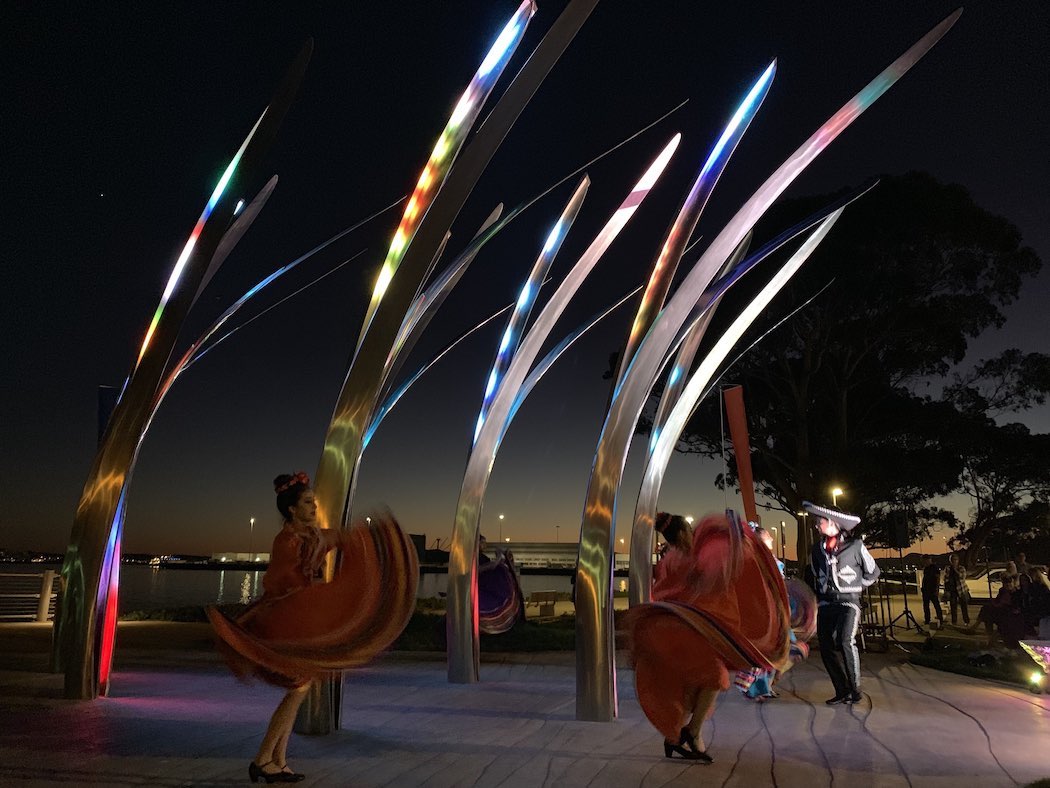
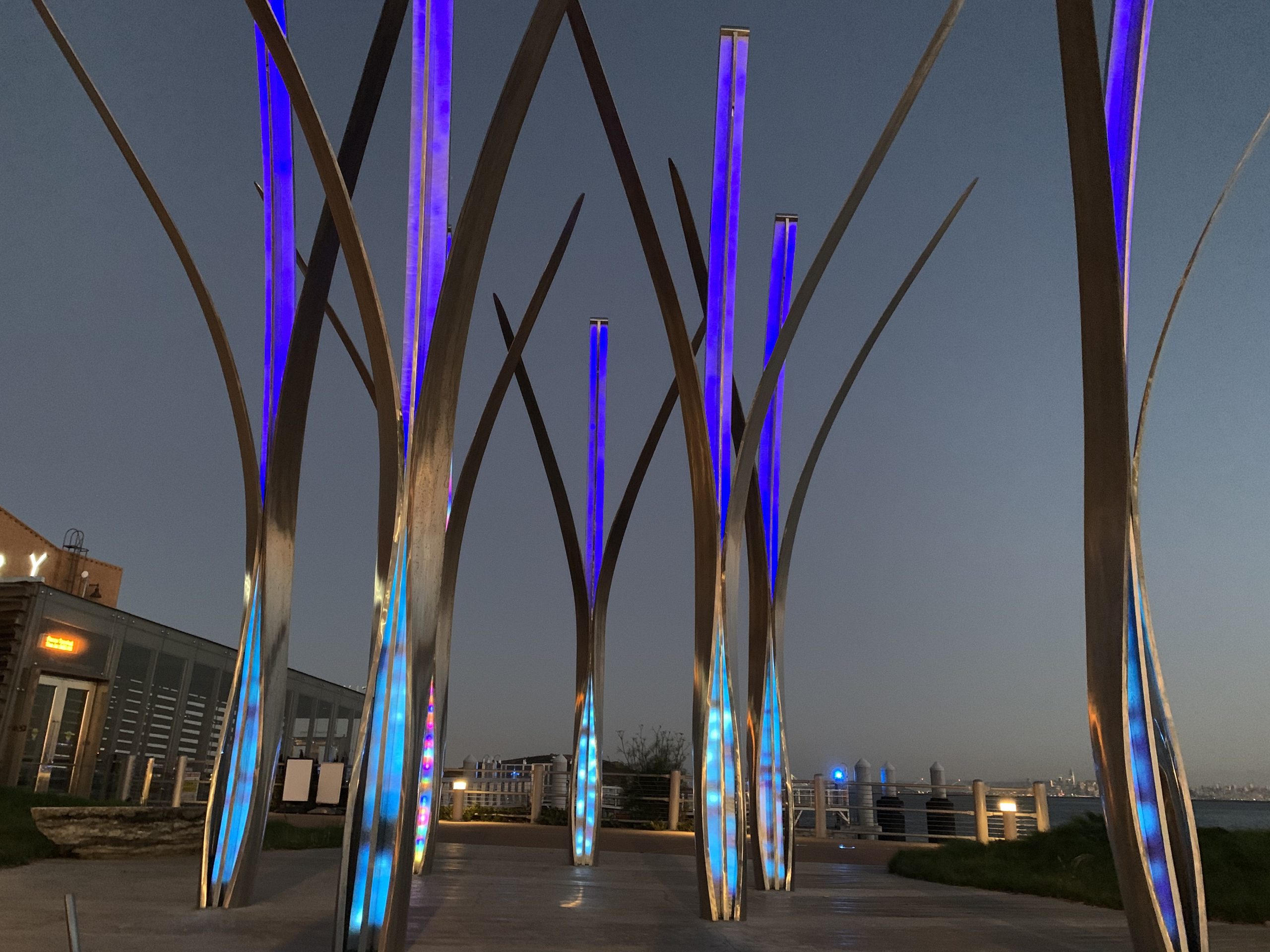
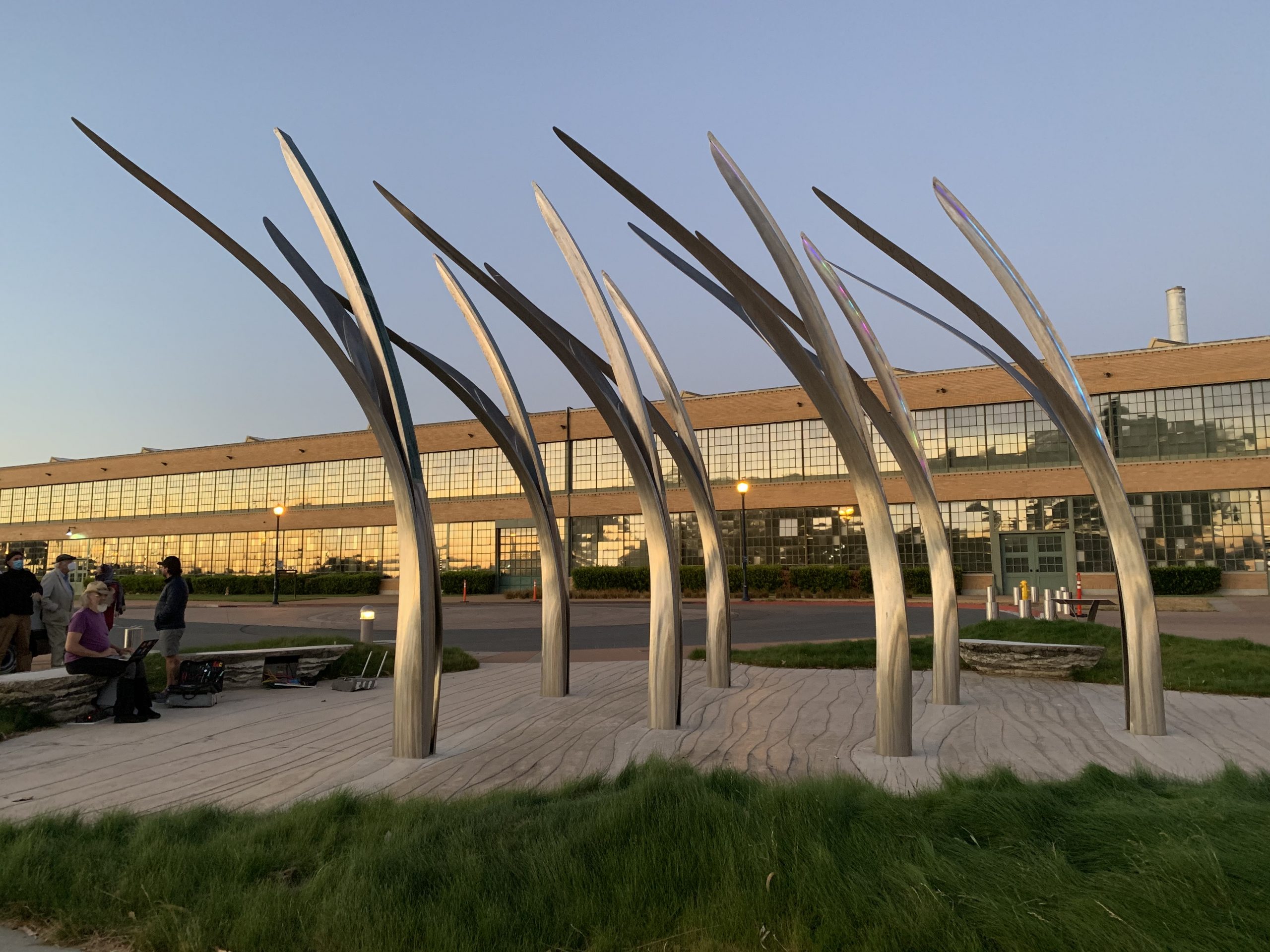
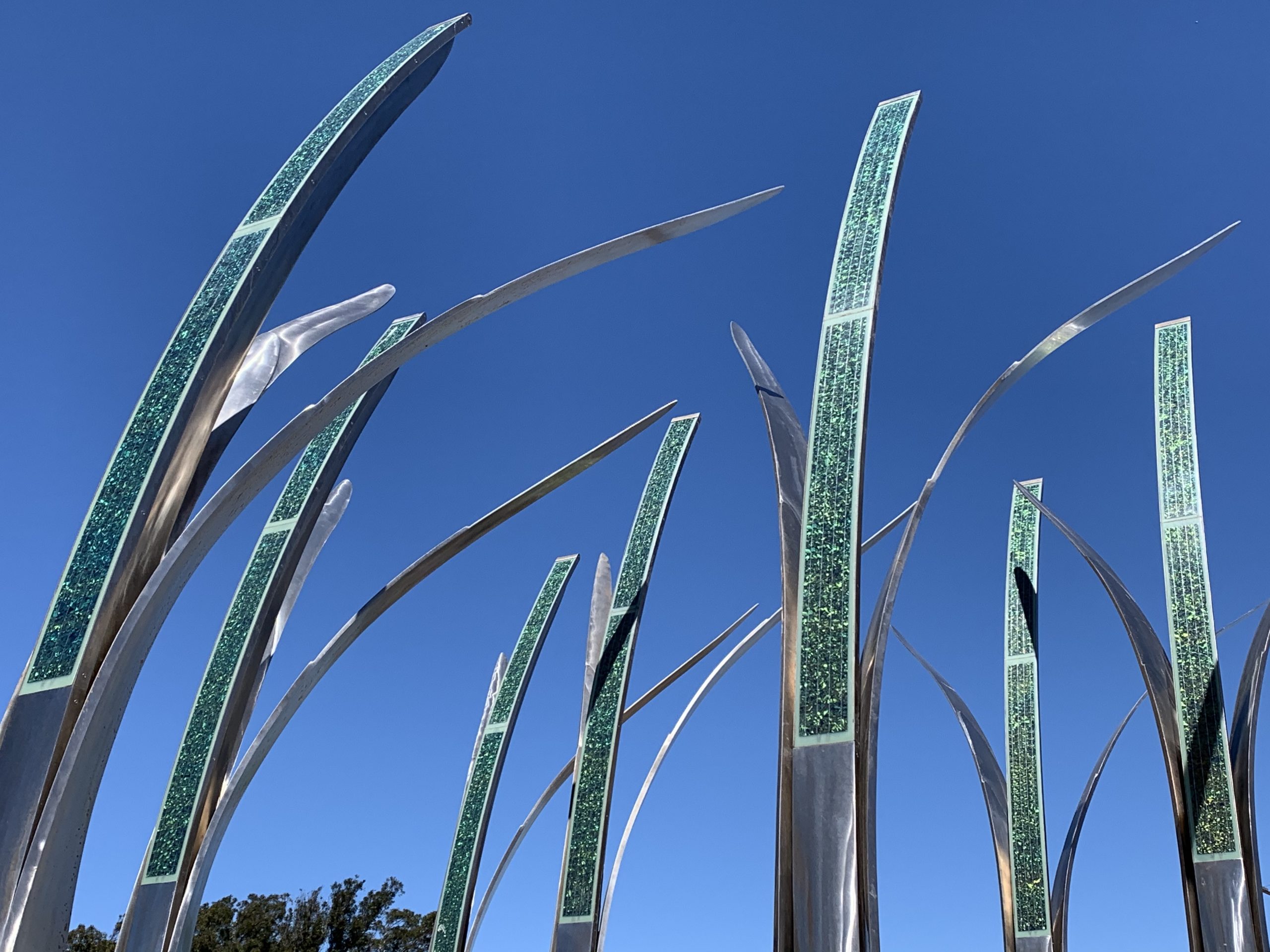
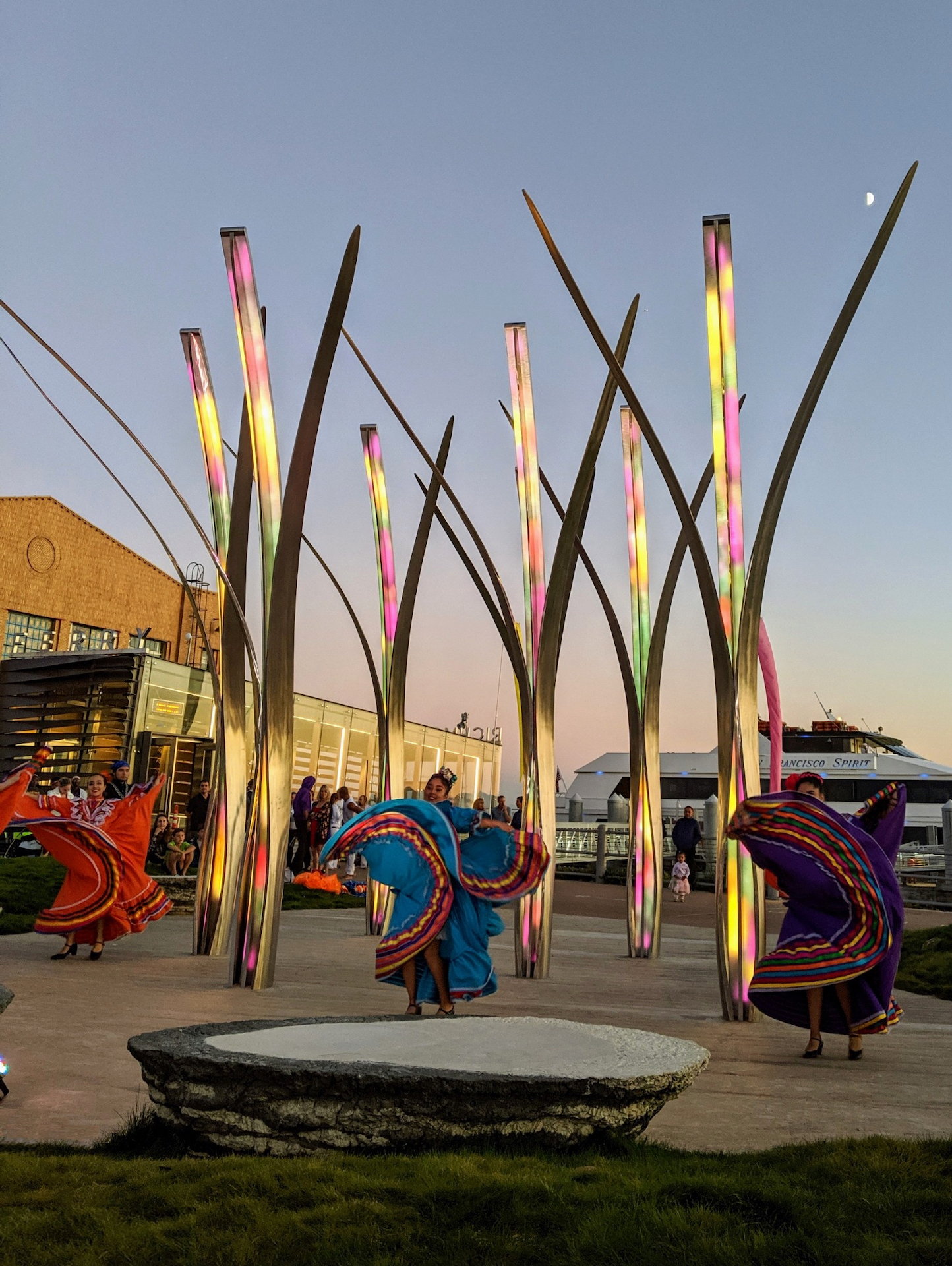
Client: City of Richmond, CA
Location: Richmond, CA, United States
Completion date: 2019
Project Team
Partner
Jennifer Madden
Reed Madden Designs
Collaborator
Stephen Heinen
Reed Madden Designs
Overview
Celebrating Richmond\'s new marine gateway, seven towering eelgrass sculptures highlight the species\' importance to the San Francisco Bay ecosystem. Richmond\'s shores contain the largest eelgrass beds in the Bay. Three large oyster-like benches and mudflat-textured concrete reinforce the underwater theme and create a free public stage for the community. On the front, custom jewel-like solar panels charge batteries that power the 20,000 programmed LEDs on the back. At night, the sculptures light up with watery images that show the real-time height of the tide. People walking within trigger motion sensors, changing the lighting shows and activating the sound of birds and waves. A plaque contains information about the sculpture, the tides and the significant role of eelgrass in the Bay.
Goals
The artists' goals were to create a vibrant destination and gateway into the city, and to promote pride in Richmond (one of the least affluent cities in the region). Secondary goals were to promote solar energy and bring awareness of the rich marine environment hidden below the surface of the adjacent waters. The artists also hoped to give teenagers a safe and fun place to hangout by providing free evening lighting shows, dance area and seating by the Bay.
Process
The project was a multi-year collaboration between the City of Richmond's Art and Culture and the San Francisco Bay Area Water Emergency Transportation Authority (WETA). WETA built the new ferry terminal next to the artwork. This included an extensive collaboration with architects, landscape architects and the general contractor. The artwork was voted on by the general public and approved by the Bay Conservation and Development Committee.
Additional Information
All public funds went solely to material and subcontractor costs. The artists donated two years to building this public sculpture and raised money through a non-profit, the Gateway Foundation, to add the motion detectors, sound components, additional light shows and informative website.